There are many different ways to support your railroad, and they all fall under the general heading of “benchwork.” Benchwork can be just about anything. We’ve heard of one modeler who uses the top of his piano for his railroad so he can enjoy his two favorite activities in the same room. Another fellow we know built his basement-sized railroad empire using supports made of structural steel. He was a metal-framing contractor, and for him steel was the easiest and most natural choice. The materials and techniques are not important as long as your benchwork gets the job done.
For your first benchwork project you may want to try a small plywood table. This will get your trains off the floor and give you a place to add scenery to your model railroad.
Benchwork for a small layout
Jim Hediger of Model Railroader magazine developed this train table and we highly recommend it. The end sills and cross members need to be cut 47″ long to allow for the thickness of the side sills. The frame of the tabletop is divided into quarters by cross-members glued and nailed in place. The tabletop surface, a 1⁄4″ sheet of 4 x 8-foot plywood is also nailed and glued. The legs are made by nailing 40″-long strips together with short lengths of 2 x 2 added to the ends of the legs with T nuts to hold leveling screws. The diagonal braces are made from 1⁄4″ x 11⁄4″ wood molding.
Good, straight, knot-free dimensional lumber (1 x 3s or 2 x 4s) has become expensive and difficult to find, so Jim Hediger, senior editor of Model Railroader magazine, devised the all-plywood table. If you’re building a small layout you won’t find a better table design than this one. It’s been used for train layouts built by Model Railroader magazine, and the entire staff swears by it. Jim uses 3″-wide strips of 1⁄2″ birch plywood cut lengthwise from a 4 x 8-foot sheet. It’s much easier if you have the lumberyard rip the plywood into the 3″-wide by 8′-0″- long strips. The charge for this service is usually reasonable,
and the strips will be perfectly straight.
to hold the pieces in alignment.
Driving a nail through a piece of 1⁄2″ plywood and into the edge of another 1⁄2″ piece can be challenging. It helps to use a large framing square to draw lines locating where the nails should go. If you still have a problem, drill small pilot holes. You should definitely drill pilot holes when you’re working near the end of a piece because you might split it otherwise.
When you’re done, you’ll have a light but strong train table.





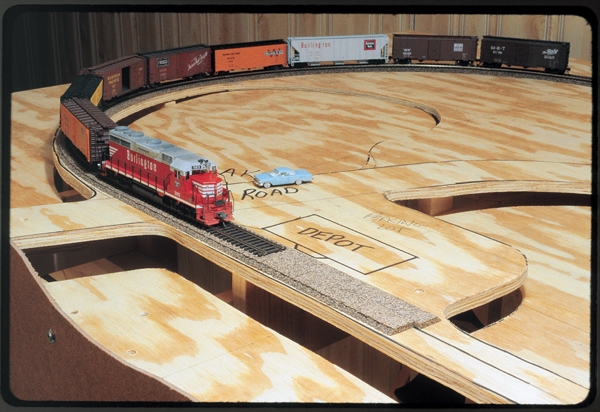
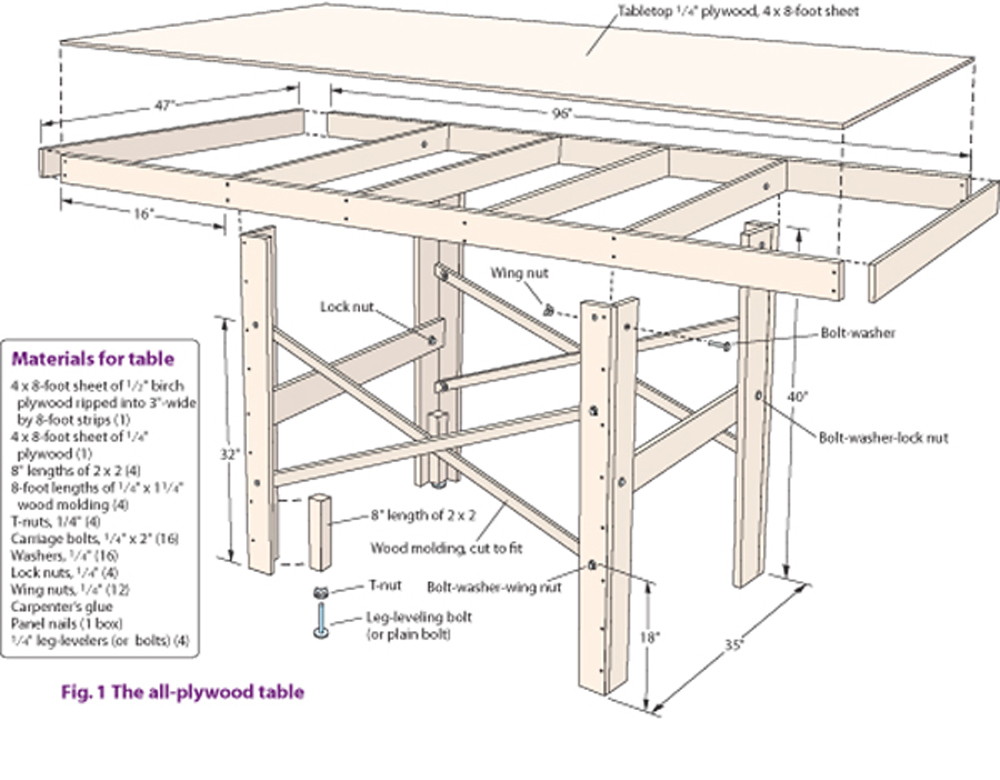
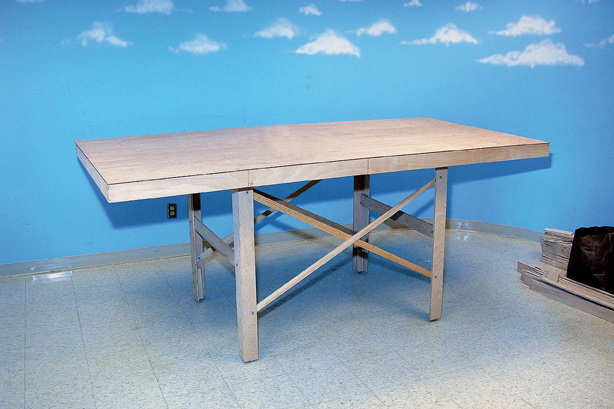
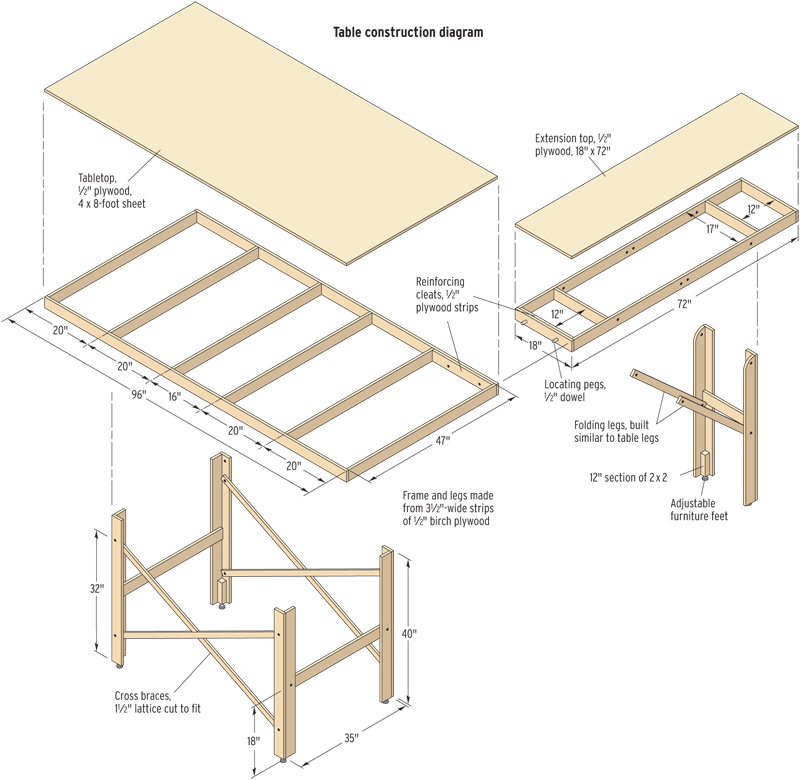
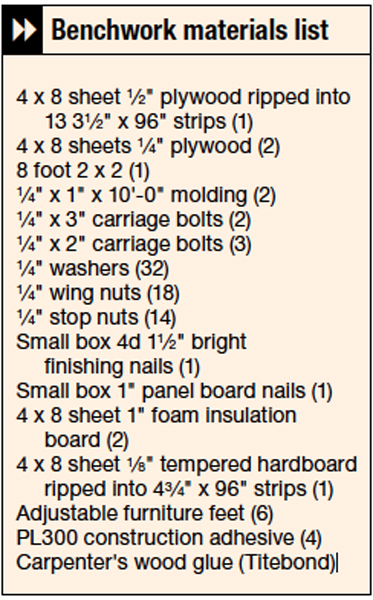
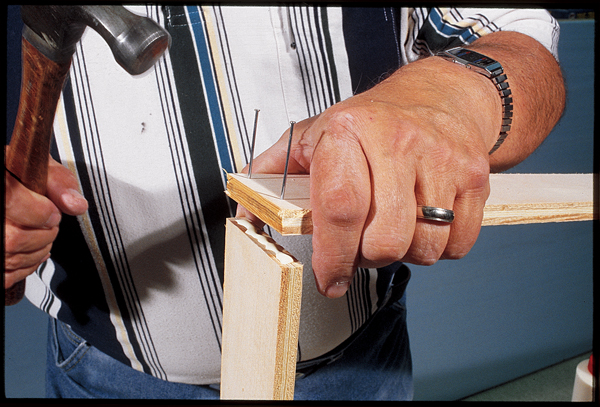
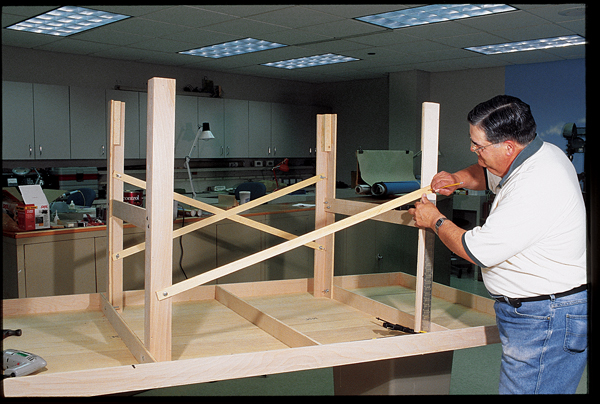

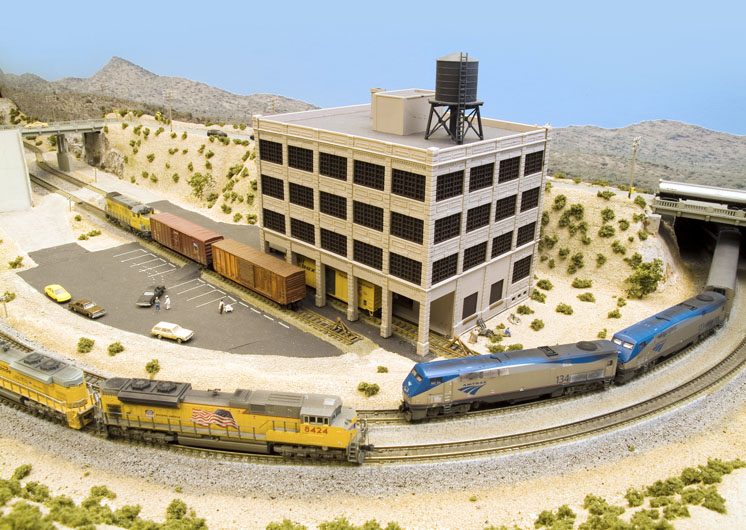

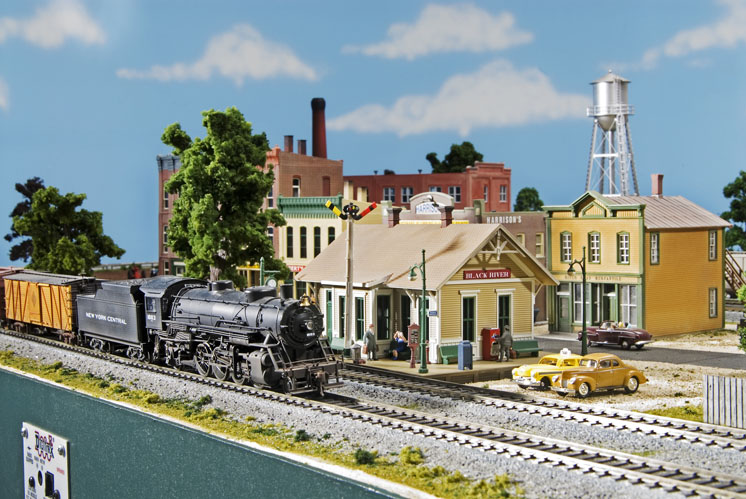
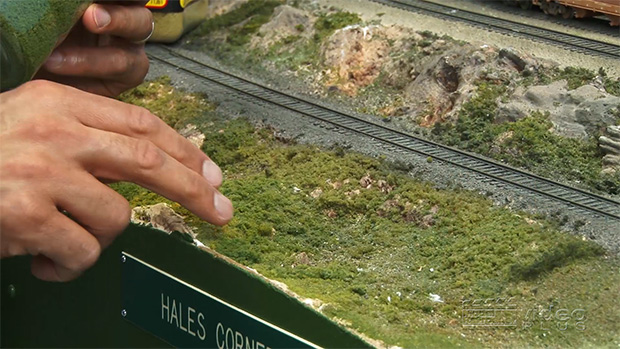




asdsdsadsadsad sdsadas dasdas
assa
sdsadsdsa